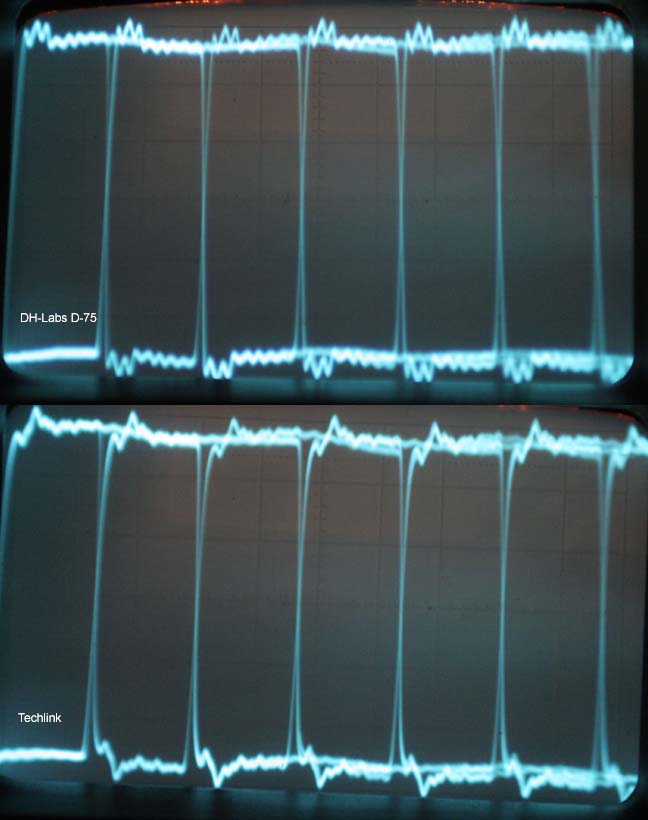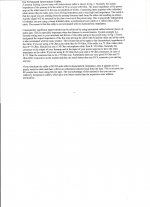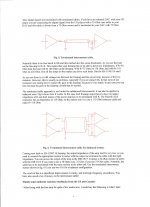It is common for high quality coax to use a silver plated steel centre conductor -steel is stronger. The consequence is higher than expected loss at low frequencies when the skin effect reduces and the poor conductivity of steel becomes important. Stranded centre conductor coax is intended for flexibilityFor Mil spec cables silver plating is for temerature range of the cable, not for any signal improvements.
RF uses parasitic capaciance and quite often the planet....we are talking about digital signal transmission (SPDIF I imagine) the signal requires a return path full stop. It aint gonna return through the air!
Low frequenicy audio analogue will be using the earth connections.
The shield provides the return path, it dosn't help IT IS the return conductor for a standard co-ax cable.
Currents that return through air are quite noticable, they have a tendency to ionise and spark some what.
Of course then we come to the SWITCH, you may of heard of these usefull little components, if electrical current worked the way you are thinking these devices would be totaly redundant.
Just remember we are NOT discussing RF but DIGITAL signal transmission.
Low frequenicy audio analogue will be using the earth connections.
The shield provides the return path, it dosn't help IT IS the return conductor for a standard co-ax cable.
Currents that return through air are quite noticable, they have a tendency to ionise and spark some what.
Of course then we come to the SWITCH, you may of heard of these usefull little components, if electrical current worked the way you are thinking these devices would be totaly redundant.
Just remember we are NOT discussing RF but DIGITAL signal transmission.
We were talking about how coax works. There are other transmission line technologies sometimes used at higher frequencies such as G-line and E-line but this is not relevant to the discussion. The fact that a single conductor can guide an EM wave at VHF and up says absolutely nothing at all about how a coaxial cable works, as that uses a different principle. The single conductor line requires that nothing comes too close; coax requires that the shield be present and close because the shield is an integral part of its operation. You are confusing two different technologies.Einric said:If I add the outer shield I get the same results.
The same holds true with my preamp to amp, I have only connected the center pin on the RCA's and did not lose anything from not having the shield.
Audio signals can use ground leads as a signal return if there is not a dedicated return conductor. Different issue.
When i worked at Motorola, way back, we used RG-400/U for UHF/VHF radio's & production testing. RG-400/U has silver plated double shielding braid & silver plated copper inner conductor with teflon insulation, the only thing better is rigid coax. Most of it was made by Thermax. It is the connector part that is interesting. We used a Wiltron return-loss bridge to measure our cable assemblies. This was done to insure that we made the cable correctly. Small assembly differences made big changes to the reflection coefficients, thus RF power measurement correlations. The N type connector was the best to use, BNC not as good and those cheap "UHF" connectors were crap, but the industry was stuck using them. Camping type connectors faired better than crimp types. Silver plating was used for its skin effect and lower losses over all.Unfortunately, I need RCA's on both ends. I suppose I could use adapters, but they may change the sound a bit. <shrugs>
At the moment I'm leaning towards a manufactured Mark Grant G200HD. It's 100% copper and reasonably priced.
Makes no sense to use expensive coax cable unless you are using it for RF purposes. Standard RG-6/U is more than sufficient for your digital transmission applications, especially if you are using "RCA" type connector, which is not a controlled impedance connector design = garbage for most for RF purposes.
Regards
Rick
Excellent cable for the money: DH Labs Silversonic - Products - D-75 Digital Innerconnect CableTo be used with Eichmann silver bullet plugs. I found some Furutech ag coax already but I do not know if that will fit. I need 1.5m and would like to keep the cost under $100 usd (just for the cable). Any suggestions?
MSRP is 90$ for 1.5m factory terminated cable.
I really like those RCAs: http://www.silversonic.com/docs/products/D-75_termination_instructions.pdf
Excellent cable for the money: DH Labs Silversonic - Products - D-75 Digital Innerconnect Cable
MSRP is 90$ for 1.5m factory terminated cable.
1.5 meters of Apex Jr's cable, a pair of decent RCA plugs, and ten minutes of soldering will get you a cable that will result in an absolutely identical system performance at 1/10 the price. But hey, it's silver coated and comes complete with ridiculous technical claims, so perhaps that's worth something.
edit: Never mind, I see this is stuff you're selling.
Not onlyNever mind, I see this is stuff you're selling
For topicstarter I'm usless from commercial point of view - I'm in EU and he can get this stuff from US without high shipping costs.
D-75 cable also availabe as "bulk" for DIY. That is exactly what I do - non of my cables (except HDMIs and Optical) bought ad "factory terminated". Saves about 1/2 of the price.
The story of those osciloscope pictures was that after replacing digital cable to D-75 from Dune to DAC I did not beleived to my ears that this kind improvement could be with digital cable and decided to check. If there is something noticable to ears, it cold be seen on measurement equipment.
Borbely is right.
If your source could drive 100ohm load without any distortion increase, with 6db loss in mind - to get 2VRMS at the input.
And if your connectors have really good contact/low resistance.
Otherwise... don't bother.
BTW, output stage being able to drive 100ohm load with no additional HD, with 8VRMS is nice to have, no matter which cables you use and how you terminate them...
But hey, it's 0.5W amp!
For the reflection maniacs - just terminate these cables on HF where it really matters, and leave the LF as is.
few-pF Cap + series resistor of 50ohm to ground terminates the transmission line on HF and doesn't loads the source.
And hey, who said you need to terminate both ends of TL? Throw a series 50ohm at source (that's what everyone do).
If your source could drive 100ohm load without any distortion increase, with 6db loss in mind - to get 2VRMS at the input.
And if your connectors have really good contact/low resistance.
Otherwise... don't bother.
BTW, output stage being able to drive 100ohm load with no additional HD, with 8VRMS is nice to have, no matter which cables you use and how you terminate them...
But hey, it's 0.5W amp!
For the reflection maniacs - just terminate these cables on HF where it really matters, and leave the LF as is.
few-pF Cap + series resistor of 50ohm to ground terminates the transmission line on HF and doesn't loads the source.
And hey, who said you need to terminate both ends of TL? Throw a series 50ohm at source (that's what everyone do).
Last edited:
- Status
- This old topic is closed. If you want to reopen this topic, contact a moderator using the "Report Post" button.
- Home
- Design & Build
- Parts
- Looking for silver digital coax


